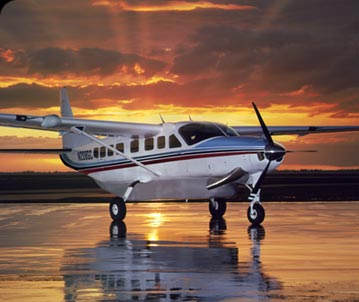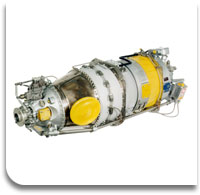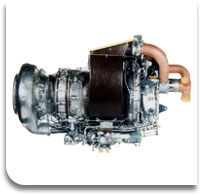
http://grandcaravan.cessna.com
This Cessna Caravan uses a turboprop engine
Turboprop / Turboshaft
Turbojet engines are efficient
at high speeds, however they are not as efficient at low speeds.
To solve this problem turboprop
engines were developed.

http://grandcaravan.cessna.com
This Cessna Caravan uses a turboprop engine
There are two basic types turboprops: fixed shaft engines and free turbines.
On a fixed shaft turbine the main power shaft (with the compressor and turbine attached) is directly connected to a gear reduction drive that spins the propeller.

http://www.pwc.ca/en/3_0/3_0_1/3_0_1_2_1.asp
The PT-6 shown above is a very popular free turbine turboprop engine, if you've flown in a couple turboprop aircraft then chances are one of them might have been powered by a PT-6
On a free turbine a separate turbine disk is connected to a gear box that drives the propeller.
Turbo Shaft engines work just
like turboprops but instead of driving a propeller they drive a
shaft that can run anything
from an electric generator to a helicopter, a tank, or even a hydroplane.



http://revolution.3/cities.com/~mcelroy/u1498.jpg
http://globalsecurity.org/military/systems/ground/images/m1-tank-running-left.jpg
http://www.eraaviation.com/flight_seeing.stm
Many large aircraft have what
is called an apu (Auxiliary Power Unit) this is a turboshaft engine
that is connected to a generator
to power the aircraft when the main engines are not running and
it is also used to start the
main engines. A.P.U.'s are usually located in the tail of the aircraft.
 Picture
of a Pratt and Whitney 900 series APU
Picture
of a Pratt and Whitney 900 series APU
http://www.pwc.ca/en/0_0/0_0_14/0_0_14_13.asp
*Whenever there is a page number underneath a
diagram the picture is from
A&P Technician Powerplant Textbook
published by Jeppesen Sanderson Inc., 1997